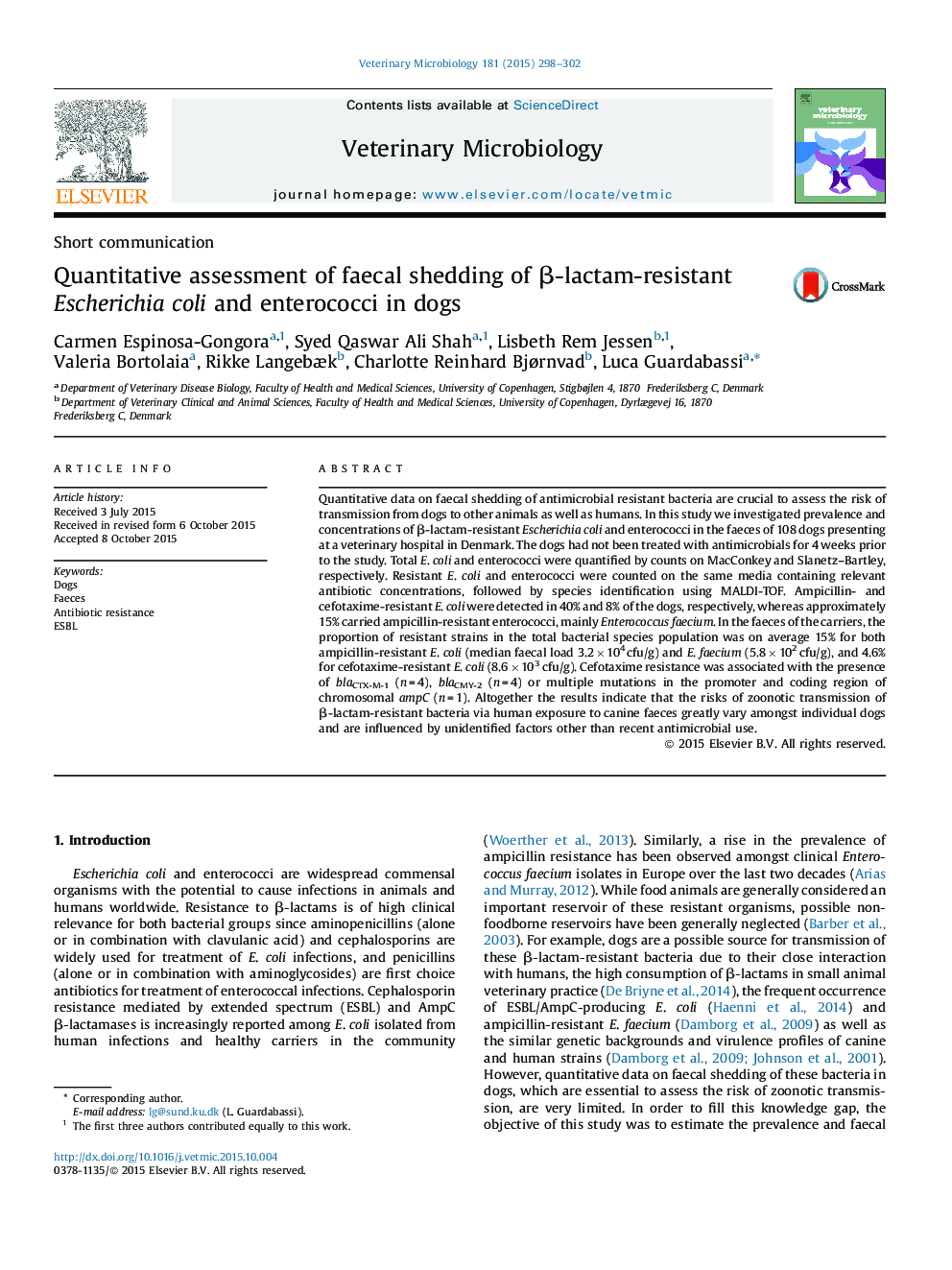| Article ID | Journal | Published Year | Pages | File Type |
|---|---|---|---|---|
| 5799849 | Veterinary Microbiology | 2015 | 5 Pages |
â¢Dog faeces harbour variable concentrations of β-lactam resistant bacteria.â¢The relative abundance of clinically-relevant resistance can be as high as 100%.â¢Risk factors other than recent antimicrobial use may influence this variability.â¢Quantitative assessment of human exposure is warranted.
Quantitative data on faecal shedding of antimicrobial resistant bacteria are crucial to assess the risk of transmission from dogs to other animals as well as humans. In this study we investigated prevalence and concentrations of β-lactam-resistant Escherichia coli and enterococci in the faeces of 108 dogs presenting at a veterinary hospital in Denmark. The dogs had not been treated with antimicrobials for 4 weeks prior to the study. Total E. coli and enterococci were quantified by counts on MacConkey and Slanetz-Bartley, respectively. Resistant E. coli and enterococci were counted on the same media containing relevant antibiotic concentrations, followed by species identification using MALDI-TOF. Ampicillin- and cefotaxime-resistant E. coli were detected in 40% and 8% of the dogs, respectively, whereas approximately 15% carried ampicillin-resistant enterococci, mainly Enterococcus faecium. In the faeces of the carriers, the proportion of resistant strains in the total bacterial species population was on average 15% for both ampicillin-resistant E. coli (median faecal load 3.2 Ã 104 cfu/g) and E. faecium (5.8 Ã 102 cfu/g), and 4.6% for cefotaxime-resistant E. coli (8.6 Ã 103 cfu/g). Cefotaxime resistance was associated with the presence of blaCTX-M-1 (n = 4), blaCMY-2 (n = 4) or multiple mutations in the promoter and coding region of chromosomal ampC (n = 1). Altogether the results indicate that the risks of zoonotic transmission of β-lactam-resistant bacteria via human exposure to canine faeces greatly vary amongst individual dogs and are influenced by unidentified factors other than recent antimicrobial use.
